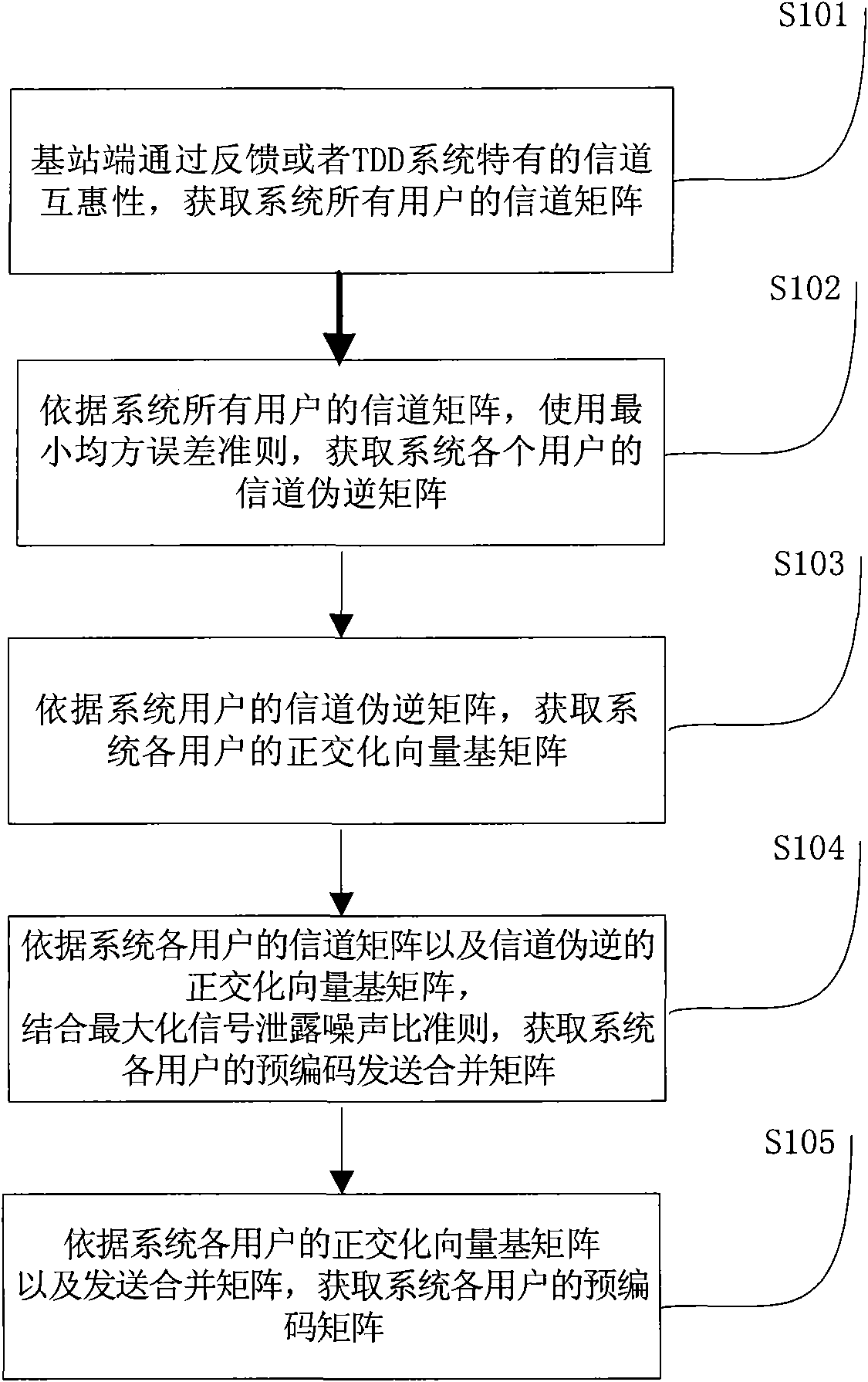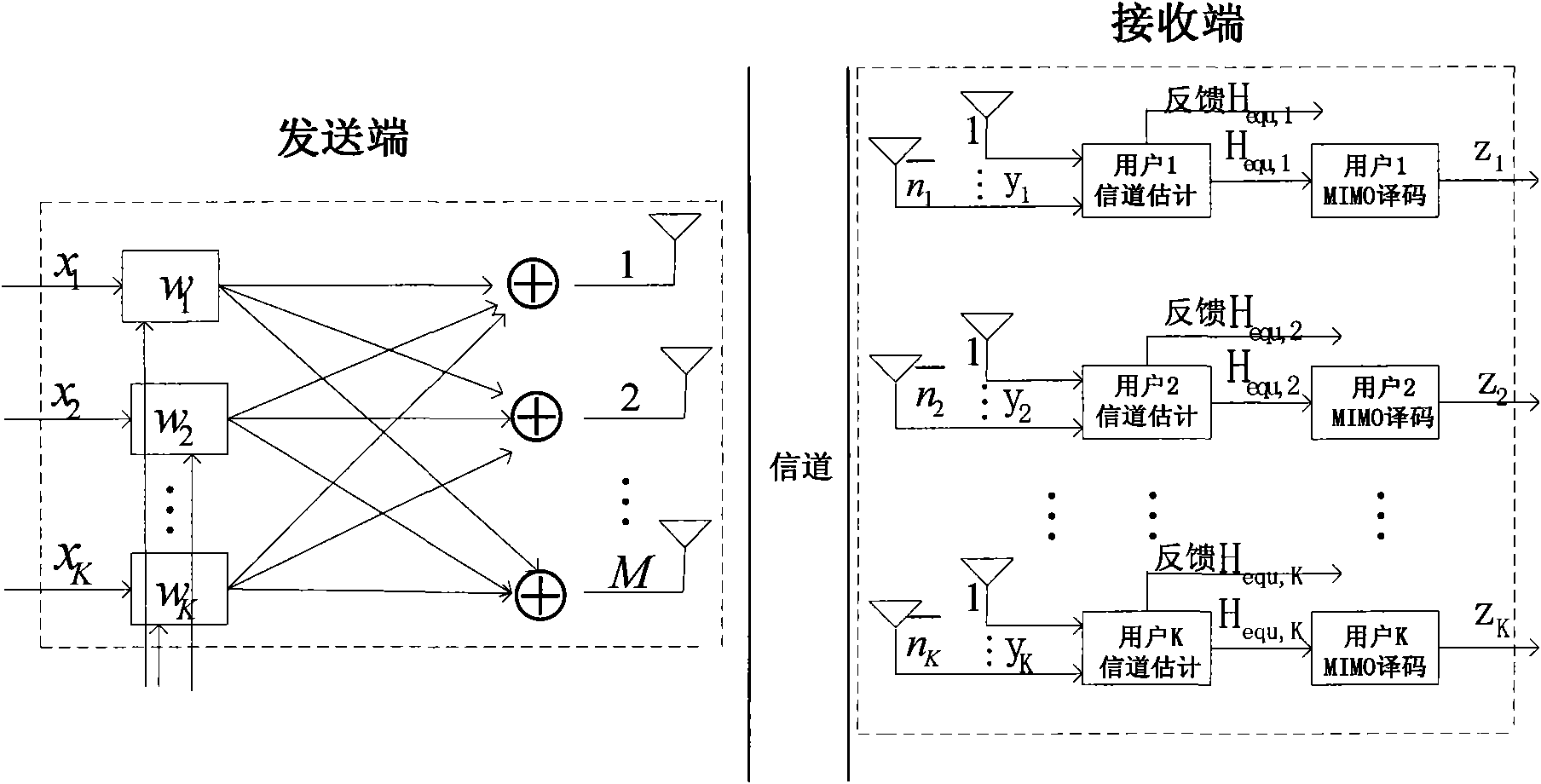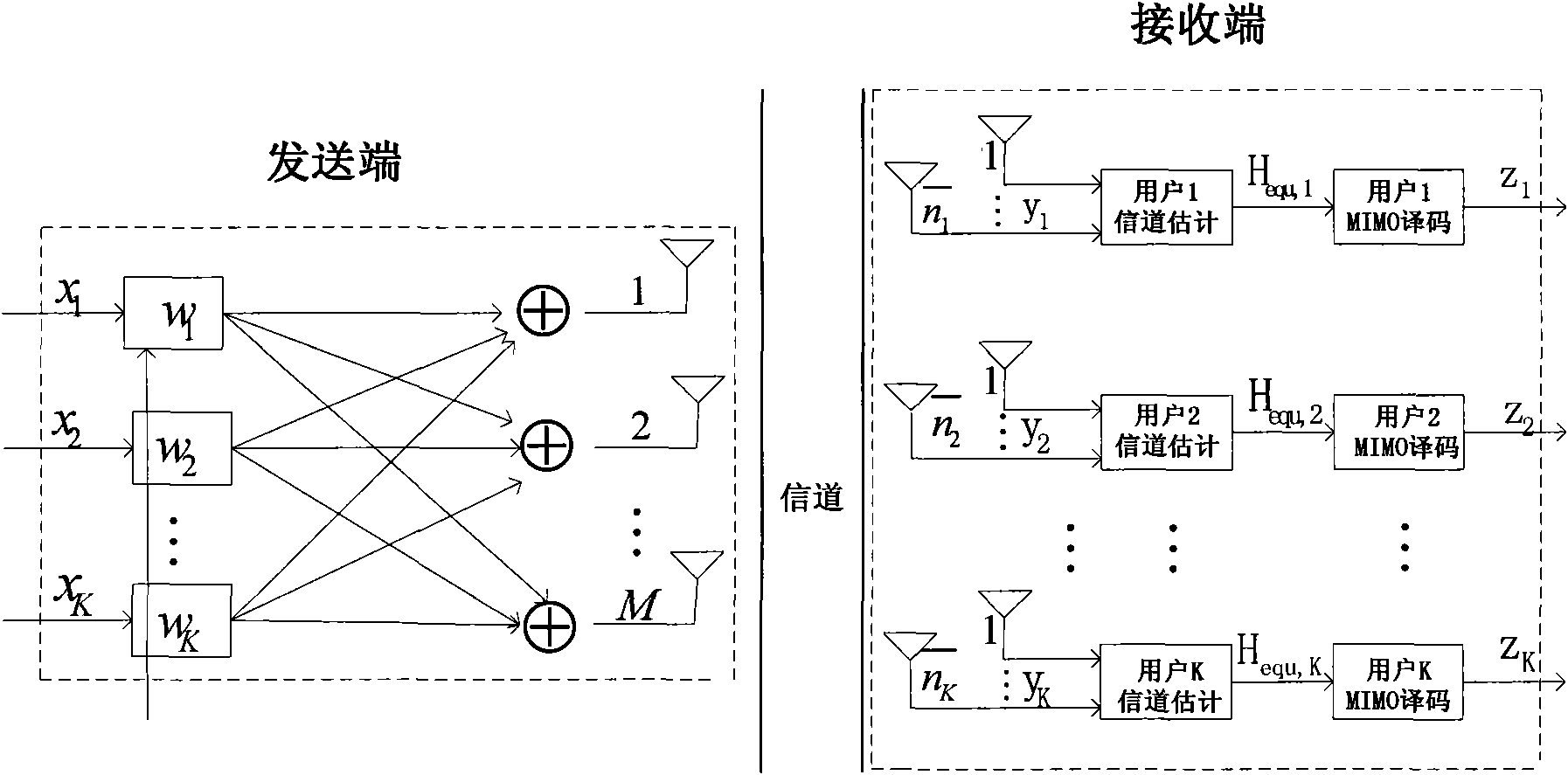Pre-coding method for multi-user MIMO system
A precoding, multi-user technology, applied in the field of low-complexity precoding of multi-user MIMO systems, can solve the problem of high computational complexity
- Summary
- Abstract
- Description
- Claims
- Application Information
AI Technical Summary
Problems solved by technology
Method used
Image
Examples
Embodiment 1
[0062] Such as figure 2 Shown is a system model diagram of the first embodiment of the present invention. In this embodiment, the base station uses feedback to obtain the channel matrix. The specific steps include:
[0063] S401: The base station stores the precoded downlink pilot symbols, and stores the precoding matrix w of all users in the system at this time t-τ ; The terminal uses the downlink pilot symbol information to perform channel estimation to obtain the equivalent channel estimation result H t,equ ; The result is the precoding matrix w transmitted at time t-τ t-τ and the channel matrix H at time t t Product H t,equ =H t w t-τ , and then the mobile station feeds back the equivalent channel estimation result H to the base station t,equ ; The base station receives the equivalent channel estimation result H at time t fed back by the terminal t,equ , extract the stored precoding matrix w at time t-τ t-τ ; put H t,equ with the precoding matrix w t-τ conjugate...
Embodiment 2
[0085] Such as image 3 Shown is a system model diagram of the second embodiment of the present invention. In this embodiment, the base station uses uplink pilot channel estimation to obtain the channel matrix. The specific steps include:
[0086] 8501: The base station uses the reciprocity of the TDD channel to directly obtain the channel matrix H of each user in the system i :
[0087] The base station uses the uplink pilot symbol information uploaded by the terminal to perform channel estimation to obtain the equivalent channel estimation result H at time t-τ t-τ,equ ; Take the result as the equivalent channel matrix H of the downlink at time t t,equ =H t-τ,equ ;
[0088] S502: The base station combines the channel matrix of each user into a channel matrix of the system The minimum mean square error matrix of the system It is based on the minimum mean square error criterion formula Obtained, where σ is the noise figure of the system, I is and HH H Identity matrix...
PUM
 Login to View More
Login to View More Abstract
Description
Claims
Application Information
 Login to View More
Login to View More - R&D
- Intellectual Property
- Life Sciences
- Materials
- Tech Scout
- Unparalleled Data Quality
- Higher Quality Content
- 60% Fewer Hallucinations
Browse by: Latest US Patents, China's latest patents, Technical Efficacy Thesaurus, Application Domain, Technology Topic, Popular Technical Reports.
© 2025 PatSnap. All rights reserved.Legal|Privacy policy|Modern Slavery Act Transparency Statement|Sitemap|About US| Contact US: help@patsnap.com



